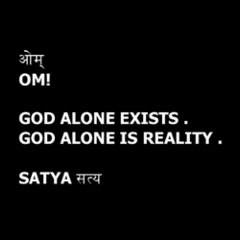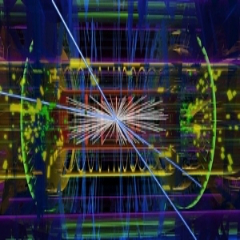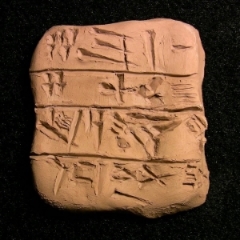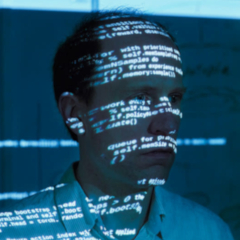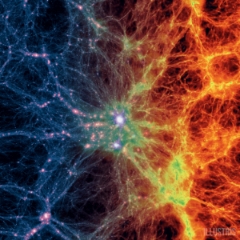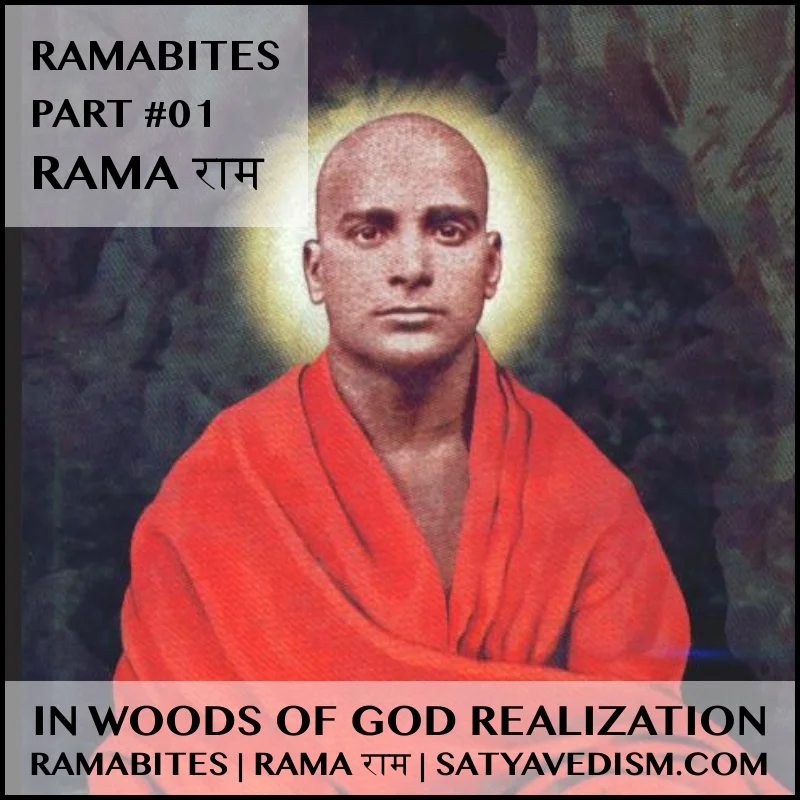L-FUNCTIONS & MODULAR FORMS DATABASE
| | homeAIMATH.ORG | AIMNEWS | 05.10.2016
|| EXPLORING THE MATHEMATICAL UNIVERSE ||
A team of more than 80 Mathematicians from 12 countries has begun charting the terrain of rich , new Mathematical worlds , and sharing their discoveries on the Web .
The Mathematical universe is filled with both familiar and exotic items , many of which are being made available for the first time .
The L-FUNCTIONS & MODULAR FORMS DATABASE , abbreviated LMFDB , is an intricate catalog of Mathematical objects and the connections between them .
Making those relationships visible has been made possible largely by the coordinated efforts of a group of researchers developing new algorithms and performing calculations on an extensive network of computers .
The project provides a new tool for several branches of Mathematics , Physics , and Computer Science .
Just like explorers , Mathematicians seek to discover paths between apparently unrelated areas .
Such discoveries can lead to breakthroughs when the connections are made explicit . . . .
The scale of the computational effort involved in the LMFDB is staggering : a total of nearly a thousand years of computer time spent on calculations by multiple teams of researchers .
A recent contribution by Andrew Sutherland at MIT used 72,000 cores of Google's Compute Engine to complete in one weekend a tabulation that would have taken more than a century on a single computer .
As noted by Sutherland , " computations in number theory are often amenable to parallelization , and this makes it easy to scale them to the cloud " .
The application of large-scale cloud computing to research in Pure Mathematics is just one of the ways in which the project is pushing forward the frontier of Mathematics .
MIT | NEWS | 05.10.2016
|| INTERNATIONAL TEAM LAUNCHES VAST ATLAS OF MATHEMATICAL OBJECTS ||
An international group of Mathematicians at MIT and other institutions has released a new online resource that provides detailed maps of previously uncharted Mathematical terrain .
The L-FUNCTIONS & MODULAR FORMS DATABASE , or LMFDB , is a detailed atlas of Mathematical objects that maps out the connections between them .
The LMFDB exposes deep relationships and provides a guide to previously uncharted territory that underlies current research in several branches of Physics , Computer Science , and Mathematics .
This coordinated effort is part of a massive collaboration of researchers around the globe .
LMFDB | L-FUNCTIONS & MODULAR FORMS DATABASE | INTRODUCTION
|| DATABASE OF L-FUNCTIONS , MODULAR FORMS , & RELATED OBJECTS ||
Welcome to the LMFDB , the database of L-functions , modular forms , and related objects .
These pages are intended to be a modern handbook including tables , formulas , links , references , etc , to very concrete objects , in particular specific L-functions and their sources .
L-functions are ubiquitous in number theory and have applications to Mathematical Physics and cryptography .
By an L-function , we generally mean a Dirichlet series with a functional equation and an Euler product , the simplest example being the Riemann zeta function . Two of the seven Clay Mathematics Million Dollar Millennium Problems deal with properties of these functions , namely the Riemann Hypothesis and the Birch and Swinnerton-Dyer Conjecture .
L-functions arise from and encode information about a number of Mathematical objects . It is necessary to exhibit these objects along with the L-functions themselves , since typically we need these objects to compute L-functions .
In these pages you will see examples of L-functions coming from modular forms , elliptic curves , number fields , and Dirichlet characters , as well as more generally from automorphic forms , algebraic varieties , and Artin representations .
In addition , the database contains details about these objects themselves . See the LMFDB universe for descriptions of connections between these objects . For additional information , there is a useful collection of freely available online sources at
http://www.numbertheory.org/ntw/lecture_notes.html .
The subject of L-functions is very rich , with many interrelationships . Our goal is to describe the data in ways that faithfully exhibit these interconnections , and to offer access to the data as a means of prompting further exploration and discovery .
We believe that the creation of the LMFDB website will lead to the development and understanding of new Mathematics .
SOURCE | SATYAVEDISM.ORG











